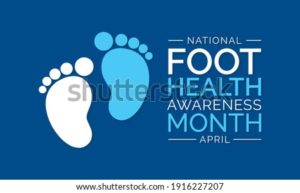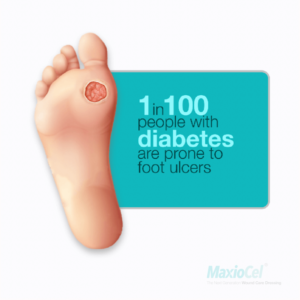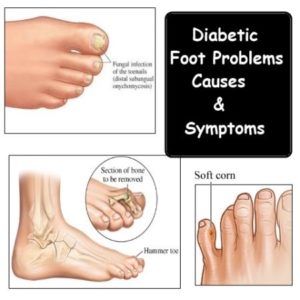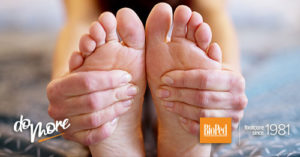Does it seem like a blister or sore on your foot takes forever to heal? For slow-healing wounds, remember the 50/30 rule: 50 percent healed after 30 days or check with your doctor.
People with chronic health problems (like diabetes, peripheral arterial disease and other vascular conditions) are at greater risk to develop a wound that won’t heal. Why? It slows down oxygen blood supply due to thicker blood in the blood stream due to high glucose levels called hyperglycemia; or its due to a blockage starting from mild to moderate blockage to even complete blockage in the leg slowing down oxygenated blood supply or none that is suppose to get below where the complete block is in the leg down to the feet. The furthest from the heart is the feet so that will show the first in symptoms with a wound and work up the leg till the blockage or until the high glucose is in normal range if its hyperglycemia. Until the problem is resolved the wound worsens.
That’s why it’s important to get medical attention before a wound becomes infected or causes serious health risks.
Wound care experts recommend people at risk for foot wounds choose proper footwear, eat a healthy diet and maintain healthy glucose levels to prevent chronic problems. A podiatrist is the expert to see first.
Nearly 7 million people in the U.S. live with a chronic wound today. One in four suffers from diabetic foot ulcers. Chronic wounds can lead to infection, limb loss and even loss of life.
Follow this advice to keep feet healthy and happy during the holiday seasons. Now we are in spring and than summer around the corner in what we will be dealing with for our feet. Tips would be:
- Moisturize – Dry winter air and cold temperatures, which we still get at this time with warmer in spring, can take a toll on skin. Moisturize feet daily to help avoid dry, cracked and irritated skin. Than when there is summer weather; one perk of a beach-bound vacation is knowing that instead of snow soaking through your shoes or having your feet feeling toasty, you can lounge happily with your toes dangling in the warm weather, shoe-free with the sand at your feet. But also, the dream does come with its own set of tootsie troubles. “Even if you are just lying still on your back soaking up the rays, your feet are still vulnerable,” says American Podiatric Medical Association. You can seriously sunburn your feet and no matter how upscale your hotel, athlete’s foot can lurk in all public pool areas.”
- Exercise your feet – Stretching is a good way to avoid muscle cramps. Stave off toe cramps by raising, pointing and curling your toes for five seconds. Repeat 10 times. Rotating your ankles can also help relax feet. Cup your heel and turn each ankle slowly five times to loosen ankle joints.
- Massage – Foot rubs not only feel good, they’re a great way to release tension, boost circulation and refresh skin after a long day on your feet. Take a few minutes to massage your feet at the end of a day of shopping and celebrating. Use lotion and take care of moisturizing at the same time!
- Pedicure properly – Picture-perfect toes are part of a great holiday wardrobe for many women. Whether you do it yourself or go to a salon, be sure your pedicure is done properly. Never use a razor to remove dead skin – opt for a good pumice stone instead. Don’t cut cuticles; push them back gently with a rubber tool made for this purpose. Use toenail clippers with a straight edge to cut nails straight across.
- Raise your legs – Feet and ankles can swell from sitting too long in one position (taking a long flight to grandma’s house for the holidays, for example) or if you’ve been on your feet all day (shopping, baking or cooking). Elevate your legs to reduce swelling. Lay or sit and lift your legs above your heart.
- Wear smart shoes – OK, so you’ll never give up your sparkly high heels when it’s time for that special soiree. But for other holiday activities such as shopping, traveling or cooking, ditch the high heels. When you know you’ll be on your feet all day, wear comfortable shoes with good arch support and a padded sole. See which types of footwear have received the Seal of Acceptance and Seal of Approval for promoting foot health.
- Get help – Feet shouldn’t hurt all the time. Persistent foot pain can be an indication of injury, irritation or illness. See a podiatrist if you experience pain; don’t wait until the holidays end.
- In case of minor foot problems, be prepared with the following on-the-go foot gear:
- Flip flops—for the pool, spa, hotel room, and airport security check points
- Sterile bandages—for covering minor cuts and scrapes
- Antibiotic cream—to treat any skin injury
- Emollient-enriched cream—to hydrate feet
- Blister pads or moleskin—to protect against blisters
- Motrin or Advil (anti-inflammatory)—to ease tired, swollen feet
- Toenail clippers—to keep toenails trimmed
- Emery board—to smooth rough edges or broken nails
- Pumice stone—to soften callused skin
- Sunscreen—to protect against the scorching sun
- Aloe vera or Silvadene cream—to relieve sunburns
Remember a podiatrist is a doctor of podiatric medicine (DPM), a physician and surgeon who treats the foot, ankle, and related structures of the leg. Without a foot it is harder to get around and without feet a wheelchair pretty much! So take care of your feet if you want to stay active on your feet to living a therapeutic life.
BE GOOD TO YOUR FEET!!




